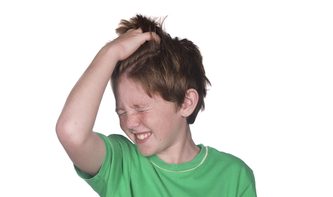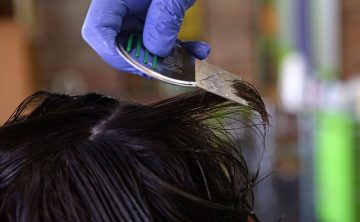Dealing with lice can be a daunting and uncomfortable experience for any parent. Recently, we received yet another notification from the school nurse informing us of a lice outbreak in multiple grades. If you’re reading this, you’re likely feeling pretty frustrated—understandably so. (And now we all know where the term “lousy” comes from.) But try to stay calm. Lice infestations are common and manageable. Everyone who has dealt with lice will tell you that it will pass. Keeping a sense of humor can make the next couple of weeks a bit easier.
We reached out to Lena Gorelik from Lice Free Noggins to get some expert advice on dealing with lice. Here’s what we learned, starting with the basics:
What Are Lice? “Head lice are tiny, wingless parasites that feed on human blood,” Lena explained. “They go through three stages: nit, nymph, and adult louse.”
What Are Nits? Nits are lice eggs. Female lice lay nits on hair shafts, and these eggs are held in place by a sticky substance. They hatch in about 8 to 9 days. Once they hatch, the empty shells, also called nits, can remain attached to the hair. “This is why nits are sometimes mistaken for dandruff!” Lena noted.
What Do Lice Look Like? Adult lice are about 2-3mm in size, roughly the size of a sesame seed. “Adult lice and nymphs are grayish white or tan and blend into the hair,” Lena said. After feeding, their abdomens fill with blood, giving them a brownish color.
How Do You Get Lice? “Lice do not jump, hop, or fly,” Lena clarified. “They spread mainly through direct head-to-head contact. It’s also possible, though less common, to get lice from sharing hair accessories, hats, or pillows.”
Where Do Lice Appear? Nits appear as tiny brown, tan, yellow, or white teardrop-shaped dots firmly attached to hair shafts, usually within a quarter-inch of the scalp. “A healthy louse likes to stay on a person’s hair,” Lena explained. “If a louse is found on an object, it’s likely dying.”
Do Lice Always Make Your Head Itchy

“Not always,” Lena said. “The itching is caused by an allergic reaction to lice saliva, and only about 60% of people experience it.”
Is Dirty Hair More Likely to Attract Lice? “No,” Lena assured. “Lice infestations are not related to cleanliness. In fact, lice prefer clean hair because it’s easier for them to move through.”
Is “Super Lice” Real?

“Yes,” Lena confirmed. “Similar to bacteria becoming resistant to antibiotics, lice are becoming resistant to over-the-counter treatments. These ‘super lice’ are resistant to pyrethroids, the common insecticides in lice treatments.”
How Can We Get Rid of Them Quickly? “Unfortunately, there are no shortcuts,” Lena said. “Use a professional-grade nit comb and a non-toxic, pesticide-free product. If you choose chemical treatments, read the instructions carefully as they can pose health risks, especially for children with asthma. Regardless, thorough and meticulous combing is essential.”
“Over-the-counter products like Nix and Rid do not kill nits (eggs). There’s no product strong enough to penetrate the nit’s shell. If you don’t comb out properly, the remaining nits will hatch, and the infestation will continue.”
If you’re struggling to treat your family or find the process too overwhelming, professional lice removal services might be a good option. Prices for head checks start at $35, and treatments start at $150. Plus, you can have it done at home, enjoying a glass of wine while the kids watch a movie, leaving the hard work to the professionals.

